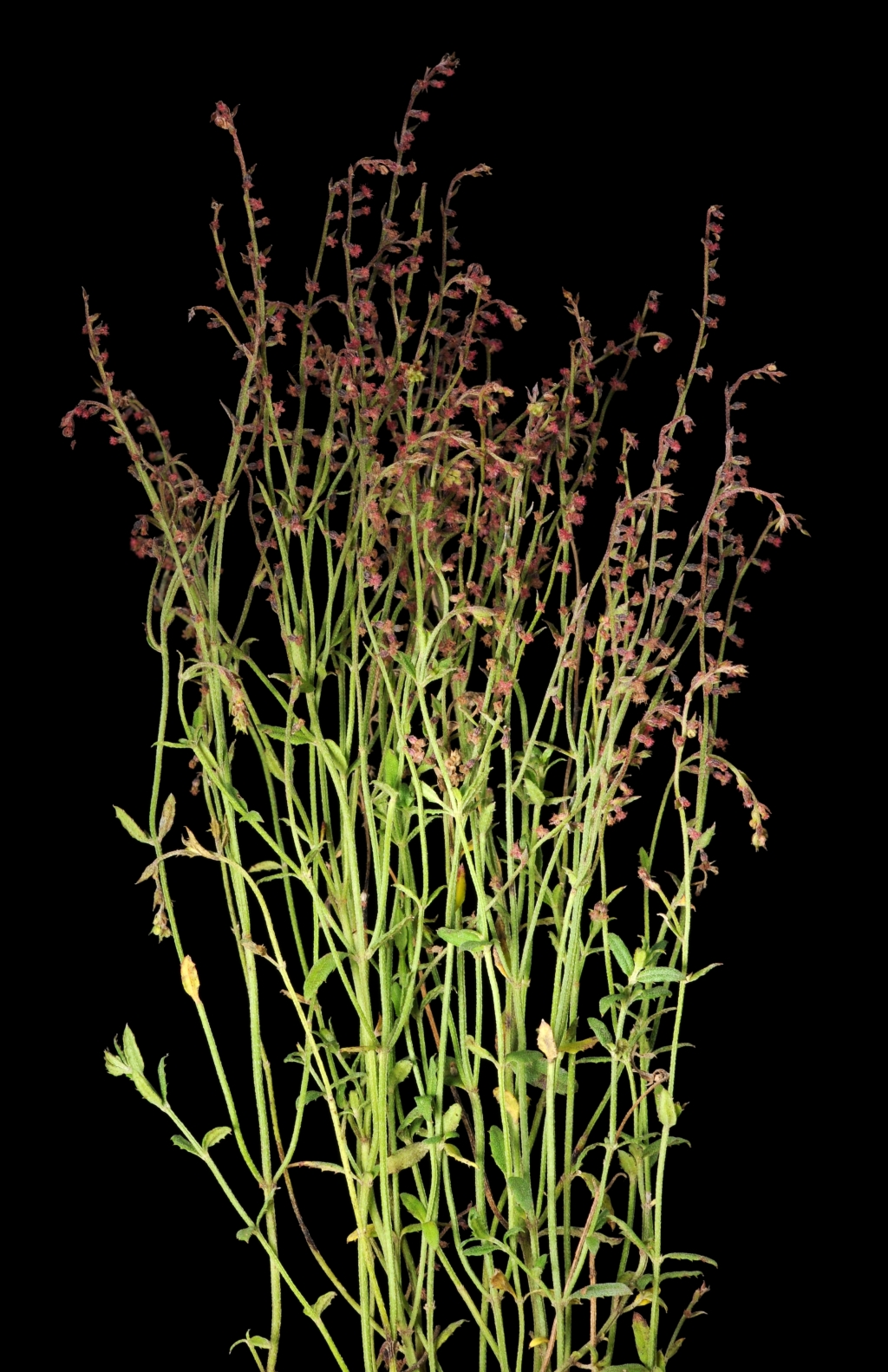Gonocarpus tetragynus
Labill. Common RaspwortPerennial herb, erect or ascending, 15–30 cm tall; stems smooth or weakly 4-ribbed, strigose. Leaves opposite, lanceolate, 0.6–1.9 cm long, 2–7 mm wide, strigose, margins thickened, with 4–8 small teeth; petiole 0.5–1 mm long; bracts alternate, lanceolate, 2–2.5 mm long, entire, sessile; bracteoles lanceolate to linear-lanceolate, 0.8–1.2 mm long, entire, reddish, membranous. Pedicel to 0.5 mm long; sepals 0.5–0.8 mm long, margins thickened, basal callus prominent; petals green to reddish, 2.4–2.8 mm long; stamens 8, anthers 1.7–2.1 mm long; ovary ovoid, 0.8–1 mm long, silver-grey to black, shiny, 8-ribbed with 2 or 3 oblique calluses between ribs, glabrous or scabrous. Fruit 1–1.3 mm long, silver-grey. Flowers Sep.–Jan.
LoM, MuM, Wim, GleP, Brid, VVP, VRiv, MuF, GipP, OtP, WaP, Gold, CVU, GGr, DunT, NIS, EGL, EGU, WPro, HSF, HNF, OtR, Strz, MonT, HFE, VAlp. Also SA, Qld, NSW, ACT, Tas. Widespread through much of Victoria, particularly in dry sclerophyll forest, scrubland and heathland.
A variable species distinguished from Gonocarpus humilis by the decussate lanceolate leaves, the close, even cover of white appressed hairs on the stems and leaves, and the presence of 8 stamens. Possible hybrids with Gonocarpus elatus have been observed (e.g. in the Grampians).
Jeanes, J.A. (1996). Haloragaceae. In: Walsh, N.G.; Entwisle, T.J., Flora of Victoria Vol. 3, Dicotyledons Winteraceae to Myrtaceae, pp. 887–908. Inkata Press, Melbourne.
 Spinning
Spinning


